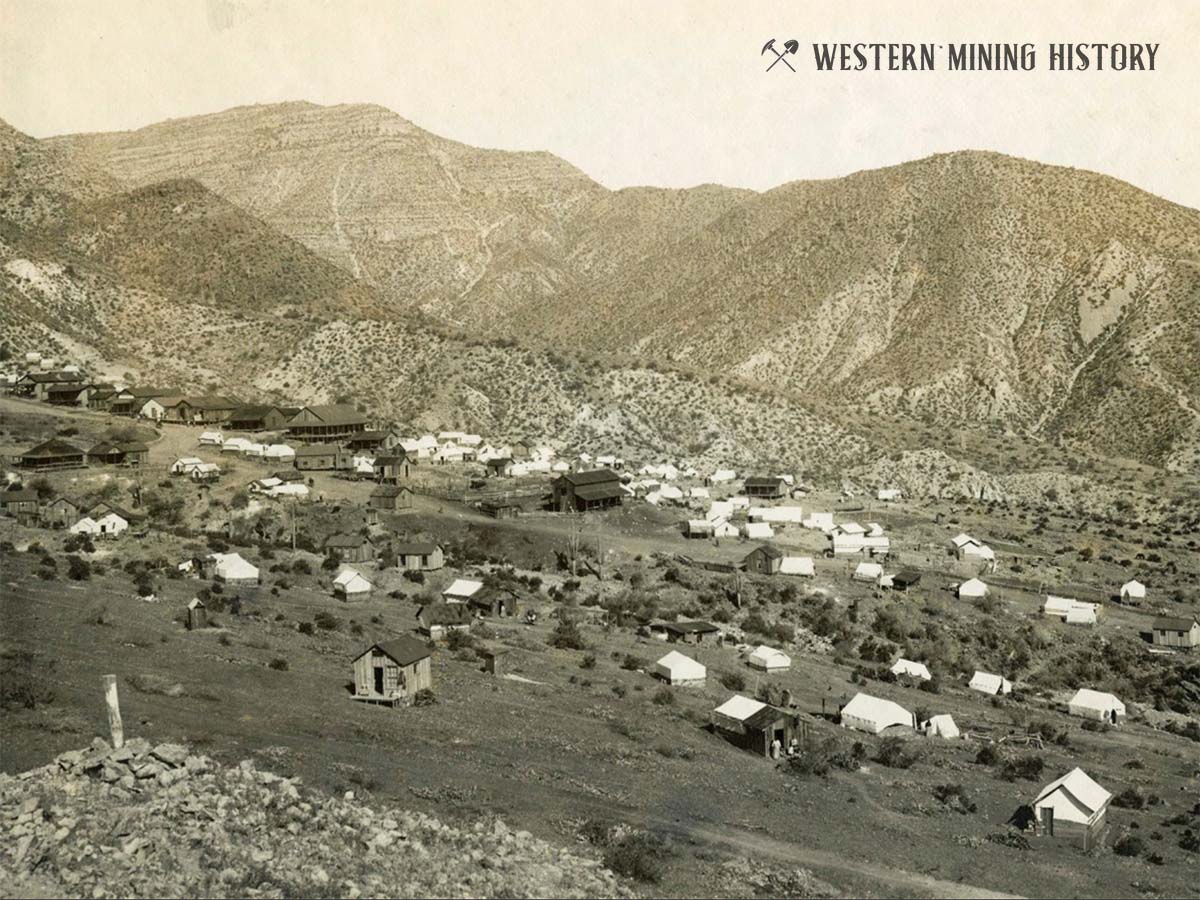Christmas History
Mining at Christmas, Arizona originated with a pair of claims that were staked around 1880. The claims were located by Dennis O’Brien and William Tweed, in an area where valuable ore was discovered in surface outcroppings. In 1882 the Phelps Dodge Company acquired the claims and in the next couple years the company built a 70-mile long wagon road to the area and continued to investigate the mineral potential of the area.
The ore at this location contained significant copper, with gold and silver as secondary commodities. Two small furnaces were erected and a small amount of ore was mined and smelted by 1884. However, that year the government surveyed the area and concluded that the claims were located on the San Carlos Indian Reservation, and Phelps Dodge was forced to abandon the operation.
For 18 years the site was mostly idle, while Phelps Dodge lobbied the government to remove the claims from the reservation. The company kept a watchman at the site to discourage any potential claim jumpers that might try to steal their claims when the land was inevitably restored to the public domain, which was exactly what happened...
The Grinch that Stole Christmas
In the almost two decades that had passed since Phelps Dodge lost their claims to the San Carlos Indian Reservation, much attention had been focused on the ore deposits of the area by various parties. As 1902 was coming to a close, the removal of the mining property from the reservation was becoming imminent, and one group of men enacted a plan to seize the claims for themselves.
On December 2, 1902 the Saddle Mountain Mining Company was incorporated with $250,000 in capital stock by W. W. Delano, J. L. Houghton, and R. A. Babcock with George Chittenden acting as general manager. Chittenden was residing at the company office in Dudleyville, just south of the Phelps Dodge claims.
On December 22, 1902, President Theodore Roosevelt signed an Executive Order that returned the Christmas property to the public domain. The managers of the Saddle Mountain company (who resided in Washington D.C.), immediately telegraphed their representatives at Casa Grande, Arizona, who sent the news to Chittendon by a relay team of horses that has been waiting for this moment.
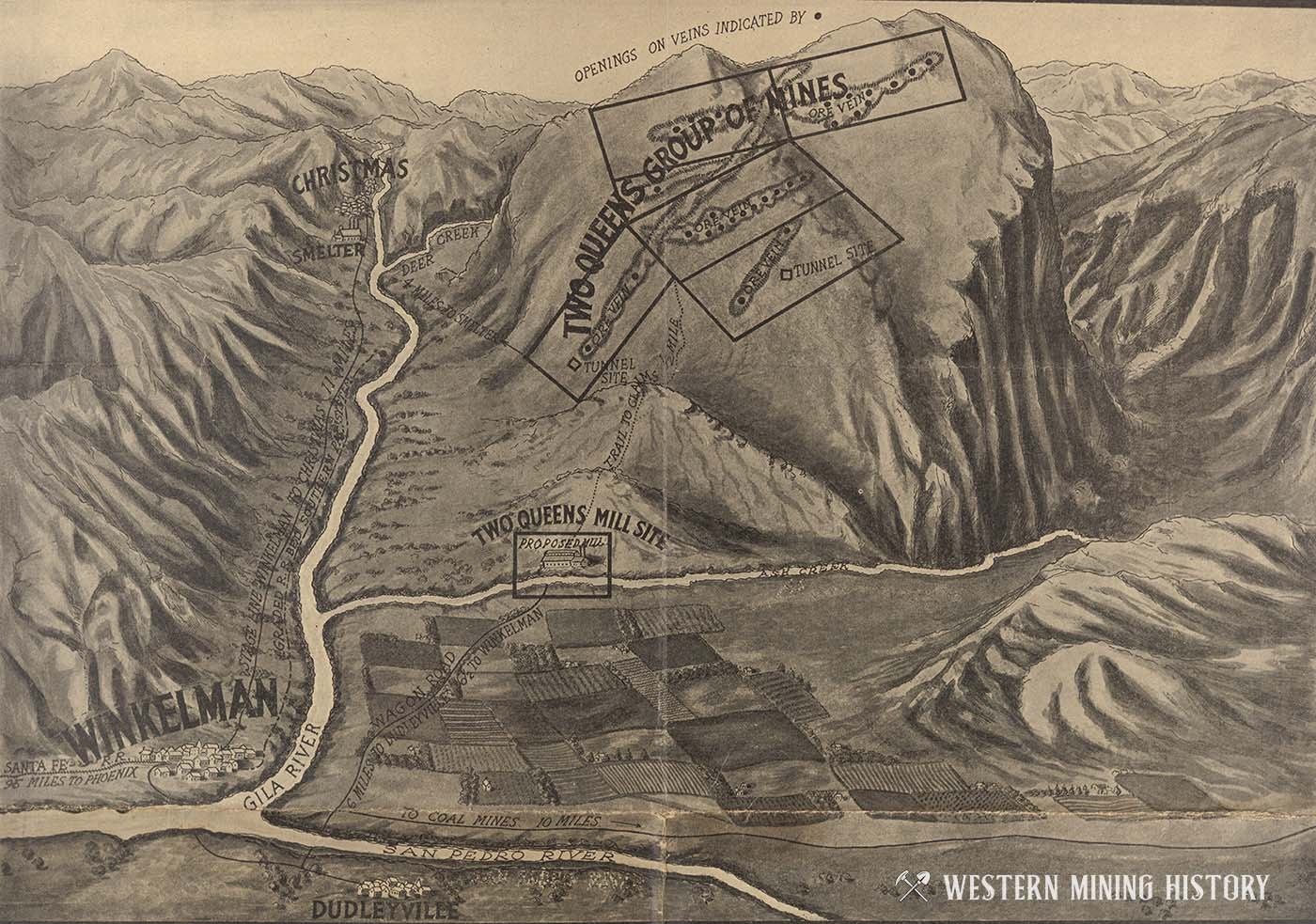
The news arrived at Dudleyville on Christmas Eve, and Chittendon with a team of men went straight to the Phelps Dodge property. Finding that the watchman had left his post to celebrate the holiday, they proceeded locating a group of claims on the land that Phelps Dodge had previously claimed. The property was named "Christmas" to mark the occasion.
Phelps Dodge filed a lawsuit in an attempt to restore ownership of the mines, but just a few months later settled the suit, allowing the Saddle Mountain company to purchase 40 of the contested claims for $160,000.
While this remarkable story has been characterized as claim jumping in some articles, it seems that this very unique situation is simply a matter of a group of clever and motivated men outsmarting a rival, as the old Phelps Dodge claims had not been active in nearly two decades.
Mining Finally Begins at Christmas
The Saddle Mountain Mining Company increased the men on its payroll from 25 to over 600 over the next few years. Both surface and shallow underground deposits were developed during this period. By 1905 the underground workings had exceeded 300 feet in depth, and that year a new smelter was constructed with a capacity of 150 tons per day.
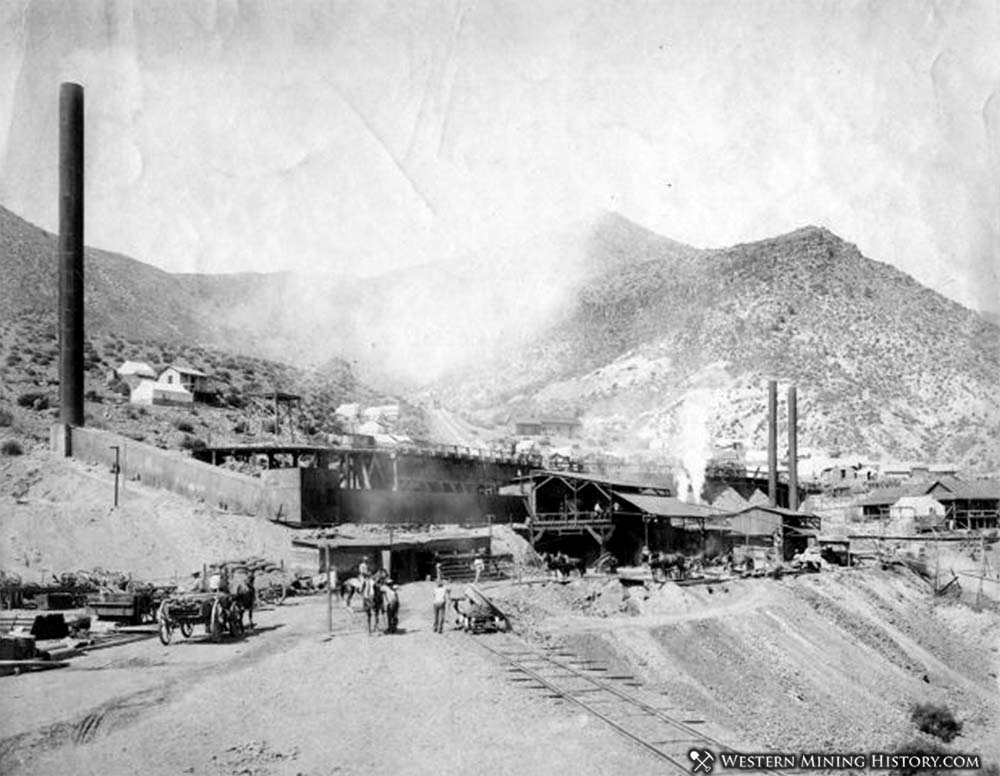
Supplies and equipment were hauled to the mines over long and difficult roads by horse-drawn wagons. The remoteness of the area and the difficulty of transporting supplies in, and smelter product out, resulted in extremely high operating costs. That, together with slumping copper prices, resulted in the shutdown of the Chritmas operation in August 1907.
In 1909 the property was purchased by the Gila Copper Sulphide Company. Over the next few years the new owners spent around $350,000 improving the infrastructure in preparation to resume mining. In 1911 the Arizona Eastern Railroad completed a 7.6-mile branch line from Winkelman to the mouth of Copper Canyon, greatly reducing the cost of transporting equipment and supplies. Despite these improvements, the company ran short of funding to restart the operation.
In 1916, the Gila Copper Sulphide Company partnered with ASARCO in a deal that secured additional funding to restart the mine, while guaranteeing ore from the Christmas operation was smelted at ASARCO facilities for a period of 10 years. One of the improvements made during this period was the construction of a 7,300-foot Bleichert aerial tram, which connected the mines with a railroad terminal along the Gila River.
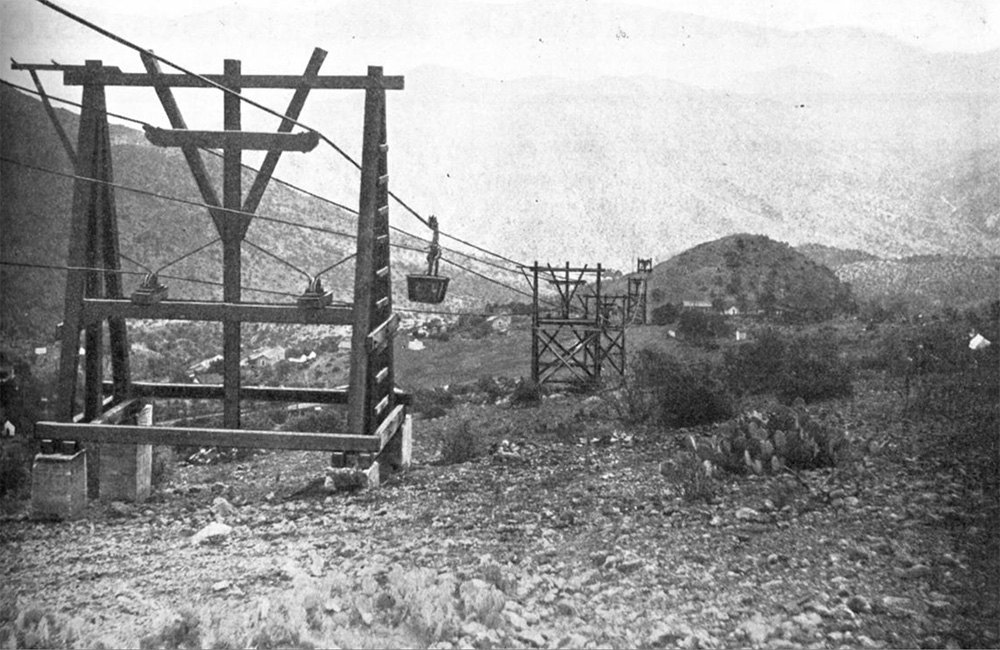
After the conclusion of World War I copper prices collapsed, and in 1921 the Gila Copper Sulphide Company ceased operations and entered foreclosure. In 1925 the Mineral Products Company took control of the Christmas properties and constructed a new mill with a capacity of 400 tons per day. Mining was resumed at larger scale than in previous years, peaking around 1930.
In subsequent decades, several different companies conducted various phases of mining at Christmas, with the years during and after World War II being particularly active. Underground mining continued until the mid-1960s when the transition to an open-pit operation commenced. The open-pit mine closed in early 1982 and there has been no mining at Christmas since that time.
In a historical twist, the Phelps Dodge Corporation reacquired the property through its merger with Cyprus Amax Minerals in 1999, nearly a century after it lost the property.
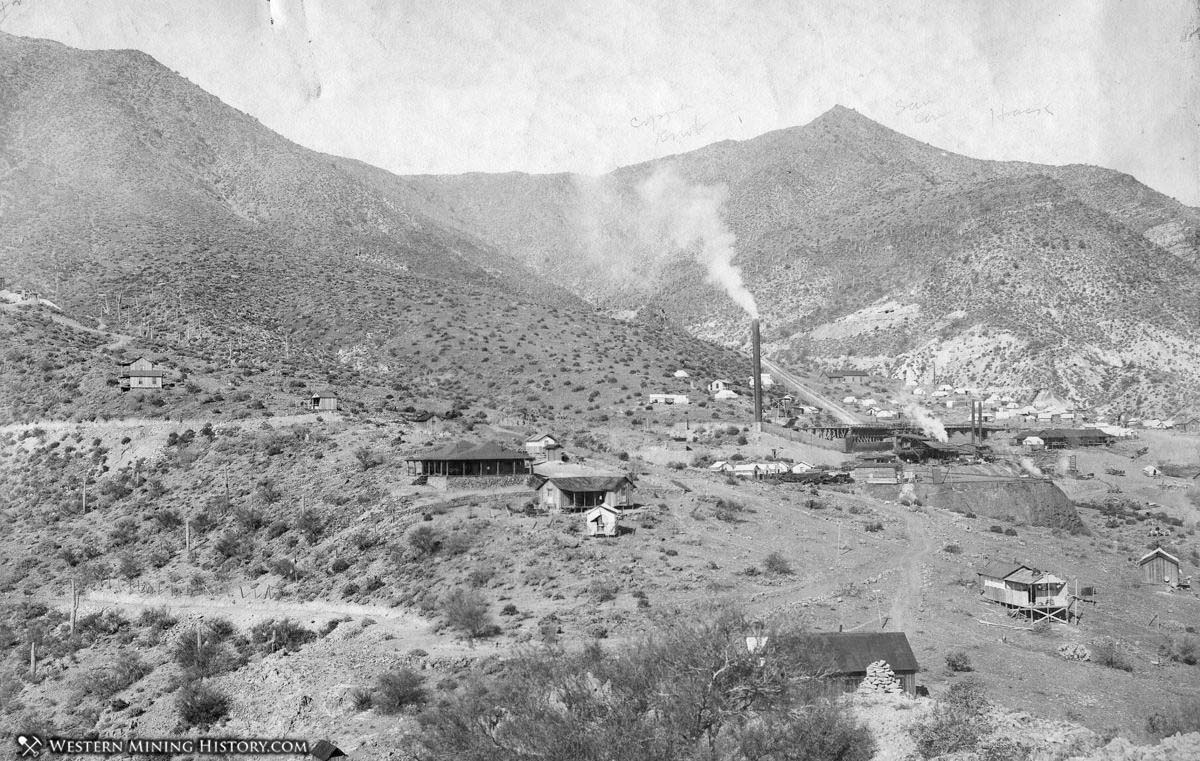
The Mining Camp Called Christmas
With alternating periods of intense development and shutdowns, the community of Christmas was undoubtedly unstable during the early years between 1905 and 1916. Not much detail about this early town has been preserved, although the image at the top of the page shows a collection of wooden buildings and numerous temporary canvas buildings. This photo was likely taken around 1905-1906 when hundreds of men were being employed in the initial effort to develop the mines.
Starting in 1916, the Gila Copper Sulphide Company built company housing for several hundred employees, and operated a company store. Managers and engineering staff were housed separately from the miners, who were primarily Mexican.
A 1919 report titled "Preliminary Examination of the Gila Copper Sulphide Company Christmas Arizona" described the company town:
The camp has an ample number of dwelling houses, mostly of frame construction, but suitable for all practical purposes, and a small club-house. evidently intended for gatherings of American employees. The cost of living seems to be about as usual in the southwest, a company store and company meat market, selling at average prices. The store is said to earn about $1,000 net per month for the company.
Nearby ranches along the Gila River, and the important agricultural region around Phoenix, are a great aid to comfortable living. For instance, fresh milk of excellent quality is avallable, -an unusual thing in Arizona. The climate is such that a large part of leisure time can be spent in the open air. The camp has no moving picture theater, and besides the club-house the only center of recreation is a pool and billiard hall.
Christmas had a post office in 1905-1924, and again in 1926-1935. Another interesting historical quirk about this town is that the post office here got very busy around the Christmas holiday as people from all over the nation mailed their packages here, only to have them reshipped to their final destination with the Christmas postmark.
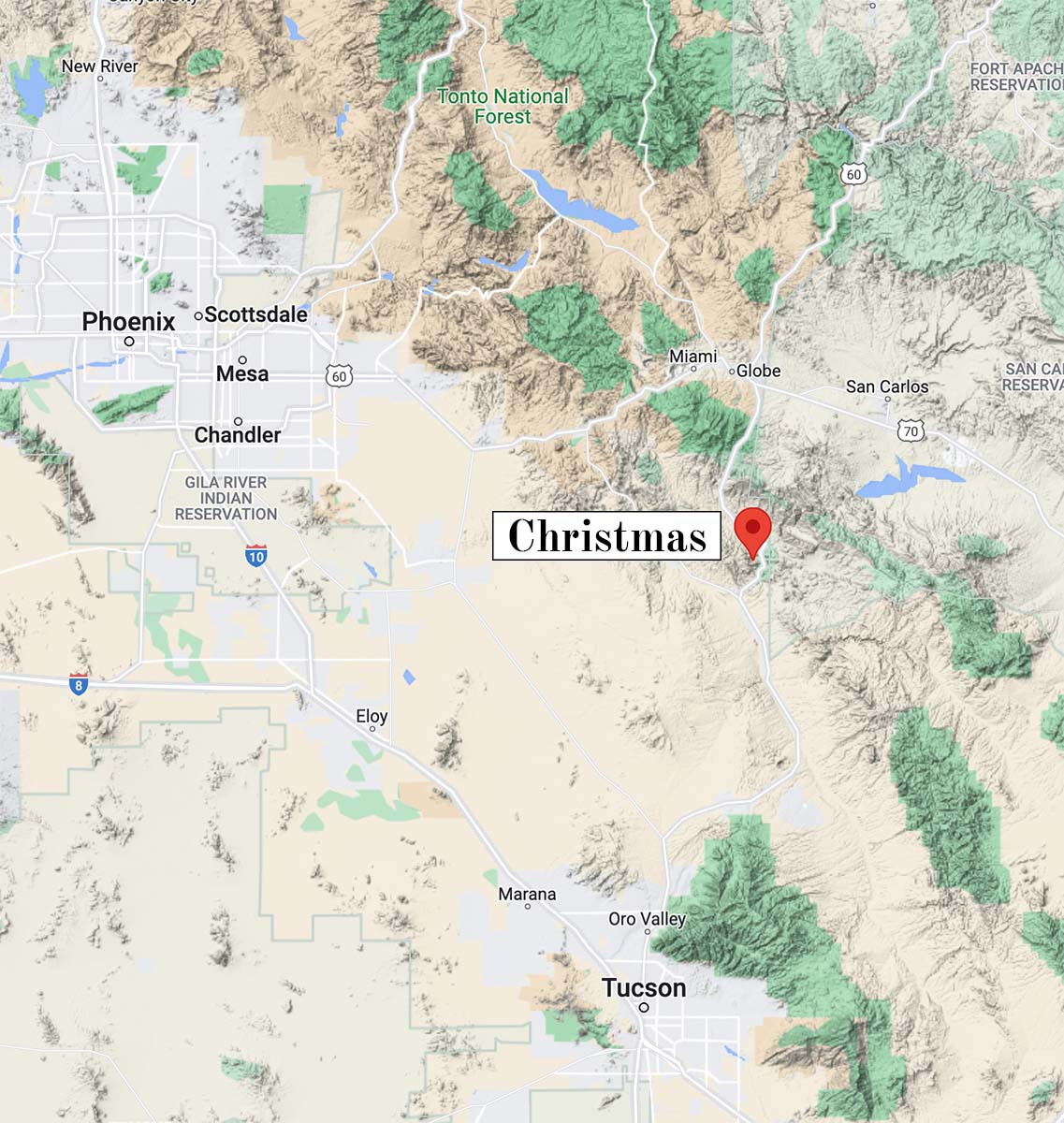
Christmas peaked around 1930 with around 1,000 residents. Although the post office shut down permanently in 1935, the town continued to be populated at various levels depending on how active mining was at the time. In the 1940s there was a mine office, store, school, and housing for miners.
The expanding open-pit mine eventually swallowed all traces of the town.
Arizona Mining Photos
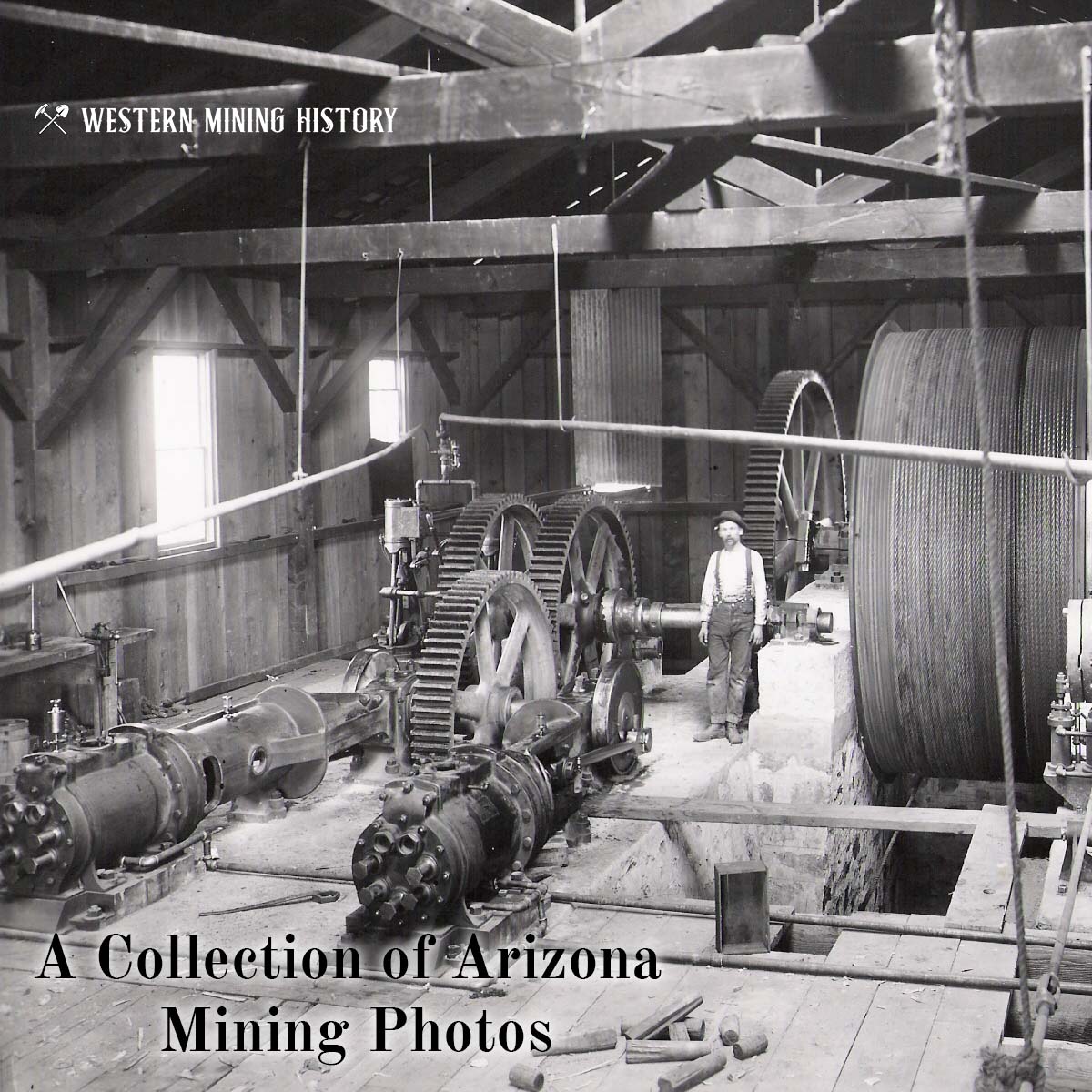
View over 35 historic Arizona mining scenes at A Collection of Arizona Mining Photos.
Arizona Gold
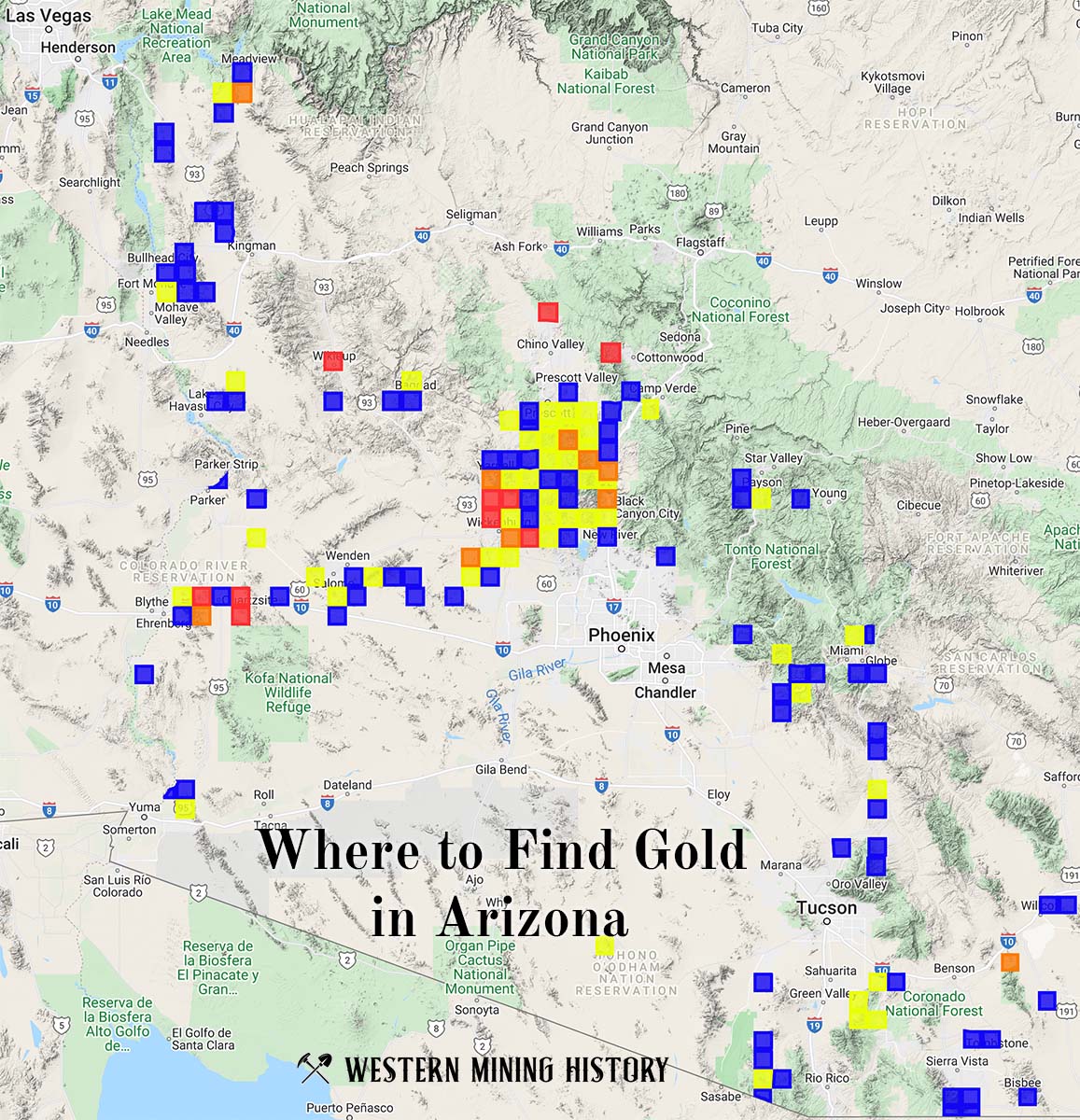
"Where to Find Gold in Arizona" looks at the density of modern placer mining claims along with historical gold mining locations and mining district descriptions to determine areas of high gold discovery potential in Arizona. Read more: Where to Find Gold in Arizona.
